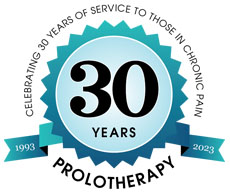Many people hear the word “inflammation” and wrongfully assume it is a bad thing. The body depends on the inflammatory cascade to heal itself. In fact, inflammation is the key to healing! Upon injury, inflammatory cells arrive at the area, via blood, to start the repair process. Thus, when blood supply is poor, healing is poor, since the immune cells cannot reach the injury.
Muscles are very vascular structures, they are beefy and red, and therefore heal quickly on their own after an injury. But the white structures of the body, including the tendons, ligaments, menisci, labrum and cartilage, have little or no blood supply. These structures can weaken due to inadequate repair following an injury, such as a sprain or tear. In an initial attempt to heal injuries, the body produces an inflammatory response designed to bring blood flow and nutrients to the weakened area. Unfortunately, many common treatments actually halt the inflammatory process, including nonsteroidal anti-inflammatory drugs (NSAIDs), corticosteroid injections, and ice. These treatments decrease the blood flow and hamper the body’s ability to heal the injured tissue, often leading to chronic pain from unresolved injuries.
Systemic inflammation is different, such as in cases of rheumatoid arthritis. When left uncontrolled, it causes painful damage throughout the body. This “bad” inflammation indicates that there is an underlying trigger causing the body to remain in this inflammatory state. The body is continuously on high alert, trying to heal itself. Common triggers can include food or chemical sensitivities or underlying infections. A healthcare provider may determine the triggers with special blood tests. Systemic inflammation aside, understanding the role of inflammation in the healing of injuries is important. It indicates that the body is trying to repair and stopping it can be detrimental to the long-term health of the joint.



